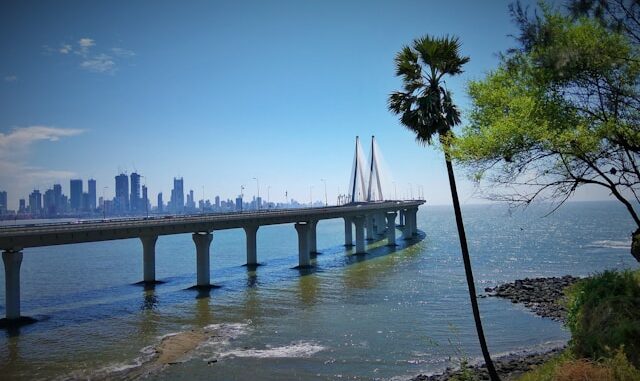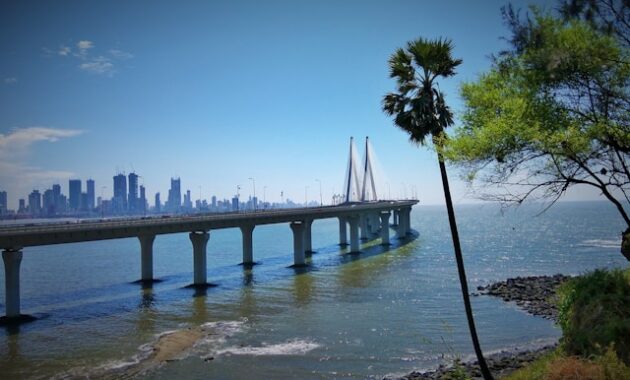
Mumbai, often referred to as the Maximum City, is the financial capital of India and a melting pot of diverse cultures, opportunities, and experiences. But is it the best city to live in India? This question sparks debates among residents and newcomers alike. Let’s delve into the pros and cons of living in Mumbai to understand what makes it an attractive yet challenging place to call home.
Pros of Living in Mumbai
1. Economic Hub and Job Opportunities
Mumbai is home to some of the largest corporations, banks, and financial institutions in India. The city houses the Bombay Stock Exchange (BSE), National Stock Exchange (NSE), Reserve Bank of India (RBI), and headquarters of numerous multinational companies.
- Thriving Job Market – Mumbai offers lucrative career opportunities in finance, entertainment, media, IT, and startups.
- Business Opportunities – The city has a booming entrepreneurial ecosystem, making it a great place for startups and freelancers.
- Bollywood and Entertainment Industry – As the heart of India’s film industry, Mumbai attracts aspiring actors, directors, and artists from across the country.
2. Cosmopolitan Lifestyle and Cultural Diversity
Mumbai is one of the most diverse cities in India, with people from various states and countries calling it home. This diversity is reflected in its:
- Food Scene – From vada pav to high-end Michelin-star restaurants, Mumbai caters to every palate.
- Festivals and Celebrations – Ganesh Chaturthi, Holi, Eid, Christmas, and Navratri are celebrated with equal enthusiasm.
- Nightlife and Social Scene – Mumbai has a vibrant nightlife with world-class pubs, clubs, and lounges.
3. Robust Public Transport and Connectivity
Despite the infamous traffic congestion, Mumbai’s public transport system is one of the most extensive in India:
- Mumbai Local Trains – The lifeline of the city, connecting suburbs efficiently.
- Metro Expansion – The metro network is growing, making commuting more convenient.
- BEST Buses and Auto Rickshaws – Affordable and widely available for short distances.
- International Connectivity – Chhatrapati Shivaji Maharaj International Airport connects Mumbai to major global cities.
4. Safety and Resilience

Mumbai is considered one of the safest metropolitan cities in India, especially for women. The city remains active 24/7, and its resilient spirit shines through even during adversities like floods and pandemics.
5. Educational and Healthcare Facilities
Mumbai has some of the best educational institutions and healthcare facilities in India:
- Top Schools and Colleges – IIT Bombay, TISS, NMIMS, and St. Xavier’s College are among the prestigious institutions.
- World-Class Hospitals – Kokilaben, Lilavati, and Tata Memorial provide cutting-edge medical services.
Cons of Living in Mumbai
1. High Cost of Living
Mumbai is one of the most expensive cities in India, with skyrocketing property prices and rent:
- Expensive Real Estate – Buying a home in Mumbai is beyond the reach of most middle-class families.
- High Rent Costs – Even a small 1BHK in prime areas like Bandra or South Mumbai can be extremely costly.
- Costly Daily Expenses – Dining out, commuting, and utilities are significantly higher than in other Indian cities.
2. Overcrowding and Population Density
Mumbai’s population is over 20 million, leading to extreme overcrowding:
- Traffic Congestion – Daily commuting can be stressful due to heavy traffic and limited road space.
- Packed Public Transport – Mumbai locals and metros are often overcrowded, especially during peak hours.
- Lack of Space – The city has limited open spaces, parks, and recreational areas.
3. Weather and Climate Challenges
Mumbai has a tropical climate, characterized by:
- Extreme Humidity – The humidity levels remain high throughout the year, making summers uncomfortable.
- Monsoon Flooding – Heavy rains cause waterlogging and disrupt daily life every year.
4. Pollution and Environmental Issues
Mumbai faces severe air and water pollution due to rapid urbanization:
- Poor Air Quality – High vehicular emissions contribute to increasing air pollution.
- Water Scarcity – Despite heavy rainfall, certain areas face water supply shortages.
- Waste Management Issues – The city struggles with waste disposal and cleanliness challenges.
5. Social Inequality and Slum Expansion
While Mumbai is home to billionaires, it also has Asia’s largest slum, Dharavi:
- Income Disparity – The wealth gap is stark, with extreme affluence coexisting with extreme poverty.
- Housing Shortages – Many migrants live in inadequate housing due to unaffordable property rates.
- Basic Infrastructure Deficiencies – Slums often lack proper sanitation, water, and healthcare facilities.
Conclusion: Is Mumbai the Best City to Live in India?
Mumbai offers unparalleled career opportunities, cultural diversity, safety, and connectivity, making it an attractive place for many. However, high living costs, overcrowding, pollution, and infrastructure challenges can be deterrents. The decision to live in Mumbai depends on individual priorities—whether one values opportunities over comfort or affordability over ambition.
For those willing to embrace its chaos, Mumbai rewards with limitless possibilities and an undying spirit. The city never sleeps, and for those who dream big, it provides a platform to achieve the impossible.